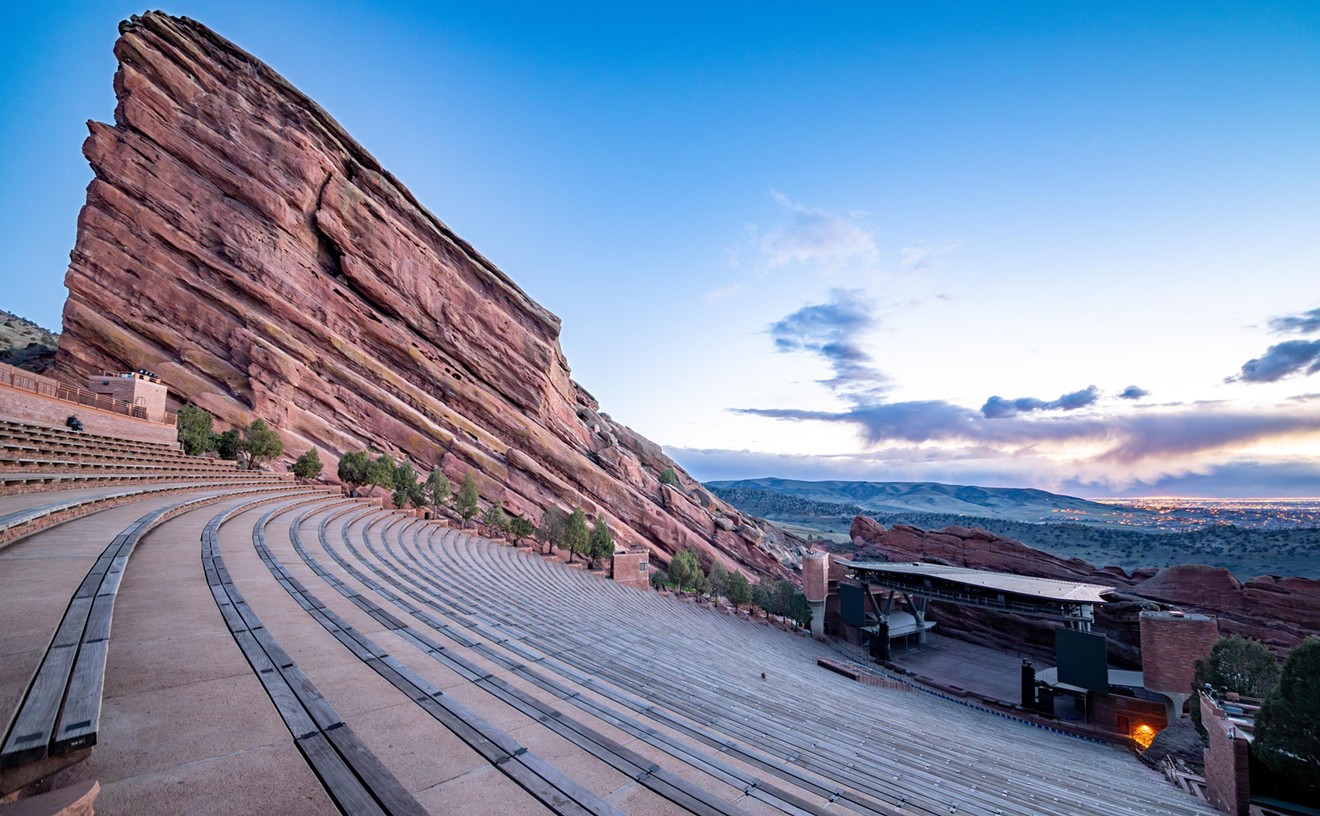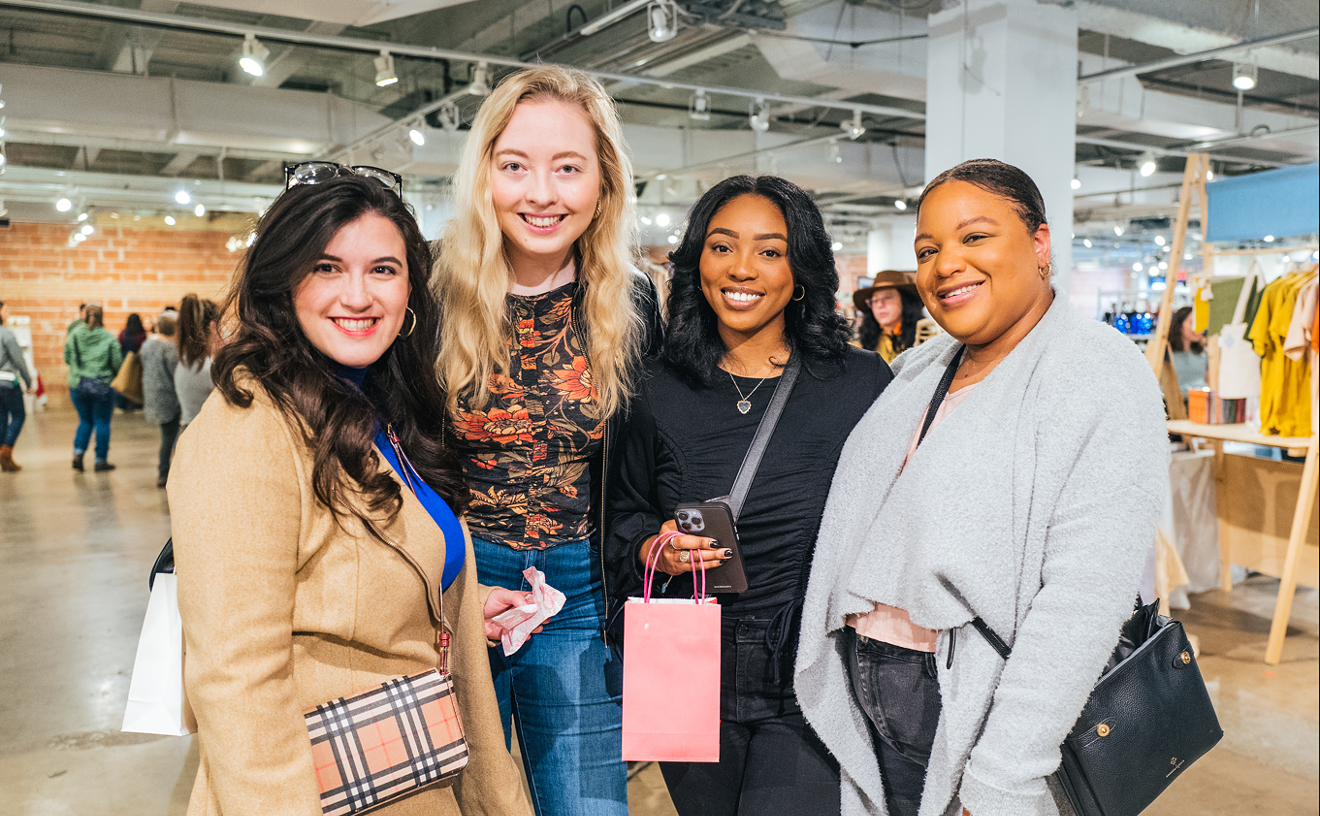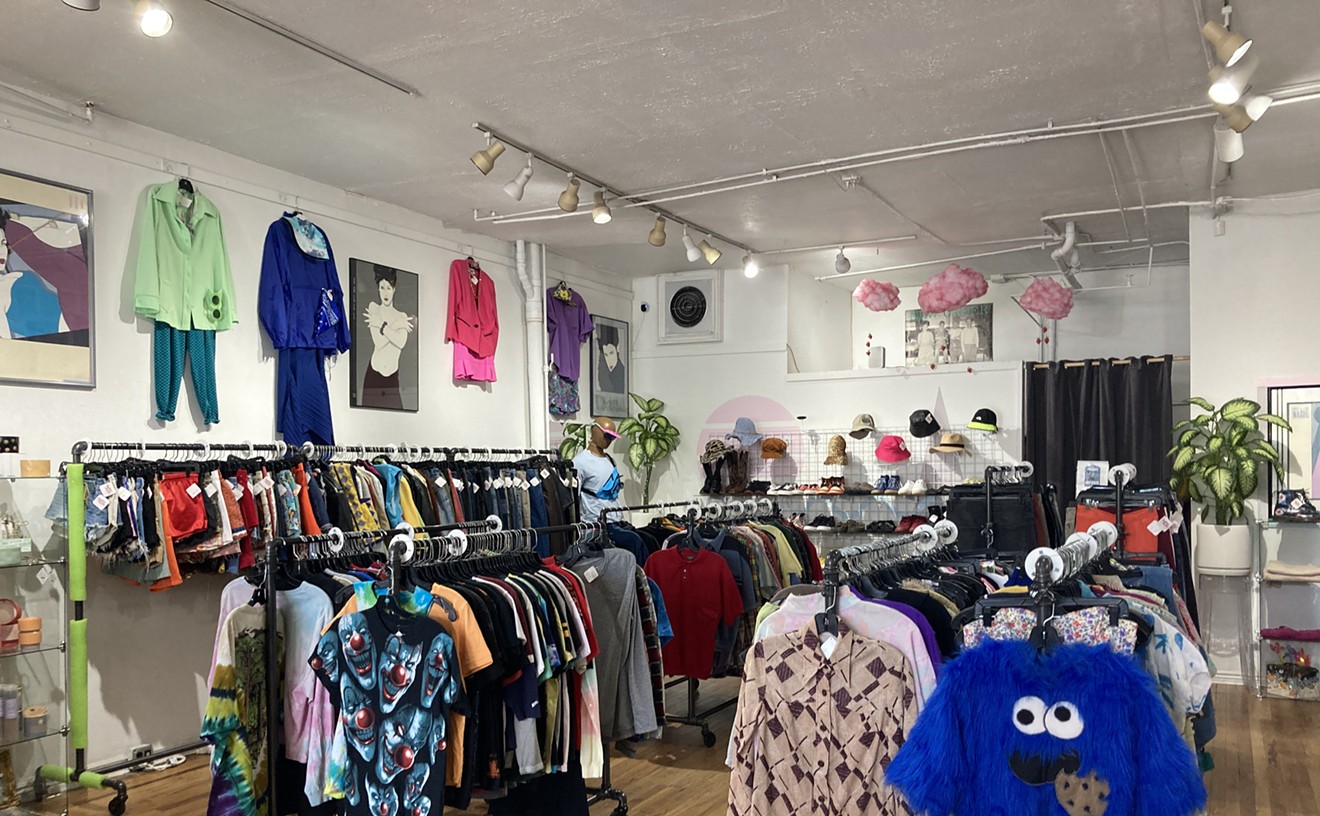The development of abstract painting a hundred years ago can be easily explained by the rise of photography fifty years before that. Since cameras were much better than brushes at recording reality, painters moved toward new ideas, like abstraction. Given this, it's hard to explain the continuing appeal of representational painting to artists and collectors. Even more confounding is that conceptual realism has emerged as the preeminent contemporary painting style — joining together the most progressive approach in the fine arts (conceptualism) with the most conservative (realism) so it plays to a wide audience.
And conceptual realism has gotten quite a workout around here, in the form of several important exhibits made possible by the largesse of Vicki and Kent Logan, who love the style and are involved with many venues, from the Denver Art Museum on down. Christoph Heinrich, the DAM's curator of modern and contemporary art, is also on board with the trend, changing out the permanent collection on levels three and four of the Hamilton Building to feature the museum's figurative pieces.
Conceptual realism is something of an umbrella term, so a wide variety of approaches fall under it. That's the case with four shows now up at two galleries. Broadly speaking, the painters featured in these exhibits fall into the conceptual-realist category, but each could also be seen as simply being contemporary realists with work that has more in common with traditional art than with the cutting edge.
At the William Havu Gallery, the main spaces on the ground floor are given over to Michael Brangoccio: Tilt, which comprises a group of large-scale paintings depicting preposterous, dream-like scenes, mostly set indoors and rendered realistically.
Born and raised in Denver, Brangoccio earned degrees at the University of Northern Colorado before launching his art career. In the late 1980s, he moved to Los Angeles, then to Iowa, where his wife's family lives. Despite this map-hopping, the artist maintained his ties to the Mile High City and has shown at Havu since the mid-1990s.
His classic style shows animals in unlikely situations, as in "Grumpy I" and "Grumpy II," in which bears are climbing the stairs of an old townhouse. In "Fishy," a fish on a mantelpiece is among a raft of oddball details. What makes paintings of this sort work is the artist's accomplished realist style, marked by a brushy, atmospheric character.
Brangoccio has written that he's not interested in themes — read narratives — and is instead focused on shapes. And while it's true that most of his paintings are perfectly composed, the story aspect — a bear on a staircase, a fish on a mantle — predominates and overwhelms any formal considerations that may have guided him.
In the space under the mezzanine at Havu, there's an intimate and thoroughly compatible show, Laurel Swab: Still Lifes, made up of meticulously done Old Masterish paintings of fruits and vegetables, most of them extremely small. Swab, who lives in Colorado Springs, has had her work included in exhibits at the Colorado Springs Fine Arts Center, the Sangre de Cristo Arts Center and elsewhere.
Her paintings, such as "Lemons" and "Eggplant," are hyper-realistic but not photo-realist, because they're more in line with the Dutch still-life tradition than with photos. Among the artist's strengths is the way she convincingly conveys the effects of light; the central subject is dramatically lit and set on a deep and dark ground that conveys indefinite space but also defines the bottom, since the subject's reflection is seen below it, suggesting an unseen tabletop.
These new paintings mark a break for Swab in terms of her chosen subject matter, if not her style, as seen in two older pieces that happened to be out at the gallery. They were nude female figures with their heads draped in cloth, a detail that adds an edgy quality to these otherwise traditionally painted figure studies.
In a weird harmonic convergence, Plus Gallery has a pair of shows that relate perfectly to those at Havu — in particular, Robin Schaefer: Mimesis. Schaefer, who lives in Denver, shows paintings that bear an uncanny relationship to Swab's, so much so that it crossed my mind that the two artists might be twins separated at birth.
I'm not suggesting that either artist copied the other, just that both have tuned into a certain zeitgeist and an approach that includes isolating natural subjects and carrying them out super-realistically; it's a contemporary-realist format that's in the air right now.
Though the similarities are legion, including the illusion of dramatic lighting with the subjects standing out against dark grounds, there are also a few key differences. Schaefer's pictures are thinly and smoothly painted and have a flat, photographic crispness, while Swab's are more heavily done and more atmospheric. The greatest difference, however, is in scale; Schaefer creates monumental pictures by enlarging the vegetables and flowers, while Swab's work is just over life-sized and thus more intimate.
The large size and photo-based look give Schaefer's paintings something of a neo-pop flavor, offset by the naturalistic subject matter. I really like the giant views of single cut flowers, such as "Tickle" and "Reverie." The prone asparagus spear in "Filament" is also tremendous, having both an animistic quality and a phallic one.
Schaefer also includes three paintings that are very different from the others and even more neo-pop and more photographic. "Paint the town red," "One over the eight," and "In his cups" are close-ups of twisted bottle caps that are difficult to see at first because they disappear into the complicated and bold backgrounds. These paintings could indicate a future direction for Schaefer.
While Brangoccio, Swab and Schaefer are all doing paintings that could be shoehorned into the conceptual-realist rubric, the artist featured in the second show at Plus, Wes Magyar: Convergence, fits in most comfortably. His paintings are not pointedly beautiful, nor are they classically composed. They contain ambiguous and somewhat contradictory messages and seem to be about the conditions of life, both in terms of isolation as well as connectedness. In two paintings, collectively titled "Restless" and presented as a matching pair, a male-and-female couple is shown in bed from the shoulders up. Despite the fact that the two are lying together in both pictures, their facial expressions and poses suggest an air of alienation, with each facing the world alone.
Magyar is a prominent young local realist who's part of a school of similarly minded artists. He came to early fame and had work included in the permanent collection of the Denver Art Museum while he was still in his twenties. He has a simple, straightforward illustration style in which the details of a picture are turned into fairly broad strokes of color. He uses the poses of his figures to convey the psychological content with which he infuses his work. In "Convergence," for example, three men are listlessly walking on an unnervingly barren and creepy street.
Michael Brangoccio and Laurel Swab at Havu and Robin Schaefer and Wes Magyar at Plus come together as an ad hoc seminar in new realist painting. And that makes these shows worthwhile as a kind of snapshot of what's currently going on.










